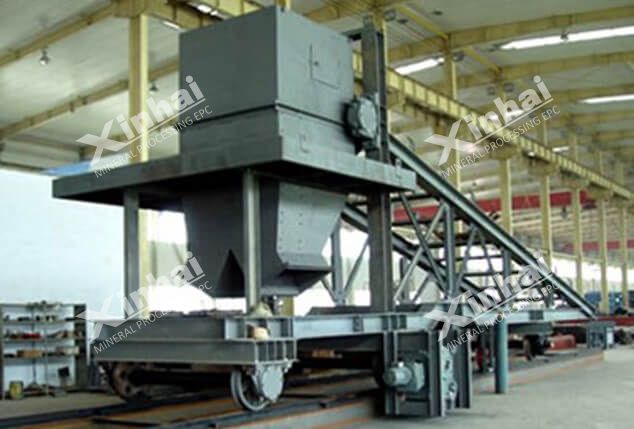A large amount of phosphate rock will be produced in the process of beneficiation, and some of the phosphate rock is mainly processed by ore washing, and the tailings produced contain phosphate and clay.
Traditionally, most of the phosphate tailings are mainly stored in tailings dams, occupying large land, high disposal costs and causing environmental hazards.
It contains phosphorus, magnesium, calcium, iron, aluminum, fluorine and other resources, among which phosphorus and magnesium are the most abundant, and it is a secondary resource rich in magnesium and low in phosphorus. Phosphorus tailings contain a large amount of elements such as phosphorus, magnesium, calcium and other elements required for the growth of crops, which can be used to produce fertilizers and are an important way for the secondary utilization of phosphorus tailings.
In order to comprehensively recover phosphorus and magnesium in phosphorus tailings, Xie Tian et al. conducted a mixed acid acid hydrolysis reaction test for the high magnesium flotation phosphorus tailings containing P2O5 5.63% and MgO 18.02% in a phosphate beneficiation plant. The main components of phosphorus and magnesium in the ore were effectively activated. In a 1000 mL volumetric flask, 100 g of phosphorus tailings, 15 g of sulfuric acid and 110 g of phosphoric acid were added. Under the optimum process conditions of temperature 50 °C and reaction time of 20 min, the grade and conversion rate of P2O5 reached 91.34% and 82.44%, respectively. Its main nutrients are high in phosphorus and magnesium, the process is simple, and the energy consumption is low, which provides a new way and new idea for the recycling of phosphorus tailings.

Fan Zhiping used phosphorus tailings as the main raw material, and added rice straw and soy sauce residue waste resources. Among them, the soy sauce residue provided nitrogen source, and the straw was used to provide ventilation and organic matter for the culture medium. Microorganisms such as Aspergillus niger had better phosphorus removal effect. Under the conditions of Aspergillus niger content of 5%, lactic acid bacteria 4%, acetic acid bacteria 3% and Bacillus megaterium 5%, the phosphorus tailings powder was fermented and dephosphorized, and the fertilizer with available phosphorus content of 2 442.50 mg/kg was obtained. The phosphorus conversion rate was 78.7%. The phosphorus-dissolving composite microbial inoculum prepared by this process has obvious effect, and provides a basis for the process of producing phosphorus-containing biological fertilizer from phosphorus tailings.
Guo Ju et al. invented a method for preparing calcium and magnesium nitrate fertilizer from phosphorus tailings, taking a certain amount of tailings powder, adding distilled water to make a certain concentration of ore slurry, and gradually adding nitric acid, reacting under specific conditions, and filtering after the reaction. Calcium hydroxide is added to the filtrate to adjust the pH of the filtrate to 6.5-7, and the filtrate is filtered again through vacuum concentration and drying to obtain calcium and magnesium nitrate fertilizers.
© 2021 Yantai KZ Mining Processing Technology & Equipment Inc.